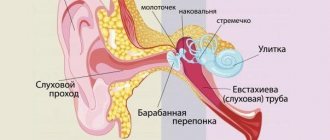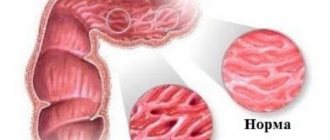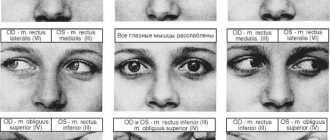Author: Ekaterina Beschastnykh, edited by first category doctor Z. Nelly Vladimirovna
According to studies by the International Union of Phlebologists and Russian epidemiologists, venous insufficiency of the lower extremities, which until recently was considered a disease of older people, has become significantly “rejuvenated.” In recent years, signs of this disease have also been identified in adolescents aged 14 to 16 years. So what is venous insufficiency, what are its initial manifestations and treatment? How to prevent this disease? To answer these questions, it is necessary to understand how blood flows in the legs and what is associated with circulatory disorders leading to CVI.
The essence of venous insufficiency
It is believed that a person, having learned to walk upright, doomed himself to venous insufficiency, since gravitational forces (according to physical laws) have a significant impact on the outflow of blood. The vascular circulatory system of the lower extremities consists of deep (90%) and superficial (10%) veins. They are connected to each other by perforators (communicant veins). The saphenous (superficial), deep, and direct perforating veins have valves that allow blood to flow toward the heart, obstructing retrograde flow.
With stable tone of the vein walls, transformation of the lumen between them, during changes in body position, occurs according to the laws of physiology. The valve apparatus also works normally, that is, after releasing blood upward, it closes, not letting it back in. But as soon as at least one of these mechanisms fails, reflux (back flow of blood to the heart in the great vessels) is disrupted.
Most often this happens when a person has to stand or sit for a long time. This leads to stagnation of blood in the lower sections of the veins. It increases pressure on the vein walls, causing them to expand. As a result, the valve flaps no longer close completely. The blood, instead of moving upward, begins to move abnormally downward. Venous insufficiency occurs.
Depending on which veins the blood flow was disrupted, the following types are distinguished:
- CVI is a chronic venous insufficiency that develops in the saphenous veins. This is the most common disease.
- Valve insufficiency of perforating veins.
- Acute venous insufficiency occurring in the deep great vessels. This form of the disease is much less common and therefore has not yet been sufficiently studied.
Possible consequences and complications
Complications of chronic venous insufficiency are:
- deep vein thrombophlebitis;
- pulmonary embolism;
- streptococcal lymphangitis.
Acute venous insufficiency can cause the development of white or blue painful phlegmasia, which, in turn, can lead to gangrene of the limb, hypovolemic shock (due to significant deposition of blood in the limb). Another complication of this condition may be purulent melting of the blood clot, with the development of an abscess, phlegmon, and in the most severe cases even septicopyemia.
Chronic venous insufficiency of the brain leads to intracranial hypertension, causes irreversible changes in nervous tissue, and can cause permanent disability.
Acute venous insufficiency
If there is a sudden blockage of the deep main vessels of the lower extremities, an immediate disruption of the outflow of blood from the veins occurs. This syndrome is called acute venous insufficiency. Most often it is caused by injuries accompanied by ligation of deep veins and acute forms of thrombosis. This form of the disease never develops in the superficial veins. Its location is only deep veins.
Acute venous insufficiency is manifested by swelling of the legs, the skin becomes cyanotic. The vein pattern is clearly visible on it. Severe pain is noted along the entire direction of the great vessels. To relieve pain in the acute form of the disease, it is recommended to apply cold compresses to reduce the filling of the veins with blood.
Rules for applying a cold compress
If the damage is severe, it is better to use cooled fabric folded in several layers. Take two pieces. One covers the inflamed area for two to three minutes, while the other is cooled in a container with water and ice. The procedure must be completed for at least an hour. For a small area, you can use ice packs.
When the stages of the acute inflammatory process are eliminated, treatment with ointments that slow down blood clotting (hepatothrombin, heparin, heparoid) is allowed. They are used as warm compresses.
Rules for applying a warm compress
- Take gauze in three or four folds.
- Soak in heated ointment.
- Apply to the affected area.
- Cover the top with polyethylene or compress paper, covering the gauze with ointment.
- Insulate with cotton wool or woolen cloth. Secure with a bandage. Leave overnight.
After removing the compress, treat the surface with alcohol.
Prevention
Prevention of acute venous insufficiency includes:
- early activation of patients after surgical interventions;
- use of elastic stockings;
- performing periodic compression of the lower leg on a bedridden patient;
- drug prophylaxis of thrombus formation at its increased risk.
Preventive measures aimed at preventing the formation of chronic venous insufficiency:
- preventing constipation;
- active lifestyle (sports, walks in the fresh air, morning exercises);
- avoiding prolonged stay in a static position (sitting, standing);
- when carrying out hormone replacement therapy with estrogen, women are recommended to wear elastic stockings, and the prothrombin index is regularly monitored;
- refusal to wear shapewear or outerwear with a tight collar;
- fight against excess weight;
- refusal to regularly wear high-heeled shoes.
Video from YouTube on the topic of the article:
CVI and its dangers
Chronic venous insufficiency is the most common pathology of blood flow in the legs, developing only in the saphenous veins. She is not as harmless as she seems at first glance. Being a consequence of circulatory disorders in the lower extremities, it contributes to the progression of pathological changes in trophism in the soft tissues of the ankle. In this case, in the initial stage, pigment spots appear on the skin of the lower leg. They very quickly grow in width and penetrate deep into the soft tissues, forming trophic ulcers that are difficult to treat. CVI often ends with erysipelas of the lower leg. In the later stages, thrombosis (formation of blood clots in the deep veins) and thrombophlebitis (thrombi in the superficial veins), pyoderma and other anomalies of the venous vessels develop.
One of the most severe consequences of venous insufficiency can be the development of thrombosis with the subsequent separation of a blood clot (embolus) from the vessel wall. The “travel” of a clot through the circulatory system threatens with a dangerous phenomenon leading to death – pulmonary embolism.
In addition, abnormal blood flow leads to a decrease in microcirculatory volume. Cardiac underload syndrome occurs. And this causes a decrease in mental activity and rapid fatigue. Impaired blood flow contributes to the accumulation of metabolic products in tissues, which provoke the occurrence of allergic reactions in the form of various skin rashes and dermatitis. The amount of lysosomal enzymes and free radicals increases in them. At the same time, the proliferation of pathogenic microflora increases, causing inflammatory processes and, as a result, macrophages and leukocytes are activated.
Diagnostics
If there are signs of CVI, you should contact a phlebologist. To make a diagnosis and exclude other pathologies you will need:
- Survey. The doctor determines the duration of the disease, identifies the patient’s complaints and risk factors.
- Visual inspection.
- Palpation.
- Tourniquet functional tests.
- Duplex scanning. This is a type of ultrasound examination that allows you to assess the condition of the veins, valve apparatus and blood supply to the desired area. During this procedure, the doctor obtains a two-dimensional image of the tissue. The advantages of scanning are simplicity, accessibility, safety (no radiation exposure) and information content.
- Ultrasound Dopplerography. Allows you to assess the speed of blood flow, the condition of the veins, their patency, as well as identify the presence of blood clots and tortuosity of blood vessels.
- Phlebography. It is an auxiliary diagnostic method. A radiopaque contrast agent is injected into the vessel, after which photographs are taken.
- General and biochemical blood tests.
- Coagulogram.
Important information: How to strengthen weak (thin) walls of brain vessels and what are the symptoms of bad blood arteries
When trophic ulcers form on the skin of the legs, laser flowmetry, multislice computed tomography and bacteriological analysis may be required.
Differential diagnosis is carried out with atherosclerosis and obliterating endarteritis.
Causes of pathology
The most common causes of CVI are physical inactivity, excess weight and heavy physical activity (heavy lifting, prolonged work in a standing or sitting position). Sometimes venous insufficiency develops after injury to the extremities. In many cases, the disease occurs against the background of hypertension or congenital pathologies of the venous system.
The risk group for the development of CVI includes the following categories of people:
- Women during pregnancy and childbirth, or taking contraceptives.
- Elderly people whose venous wall tone decreases due to aging of the body.
- Adolescents in whom CVI may occur due to changes in the functioning of the hormonal system during puberty.
- People using hormonal drugs for treatment.
The use of physiotherapy for diseases of the veins of the lower extremities
Physiotherapeutic procedures are an indispensable aid in the treatment of chronic venous insufficiency. Their use gives a positive effect regardless of the degree of the disease. In the treatment of vascular diseases, the following procedures are most common:
- electrophoresis;
- magnetic therapy;
- intermittent pneumatic compression;
- laser therapy.
Electrophoresis of the legs
In combination with drug therapy, physiotherapeutic procedures can achieve the maximum positive effect in the treatment of venous insufficiency of the legs.
Main manifestations of CVI
The very first manifestations of CVI disease are a feeling of heaviness in the legs and the impression that they are bursting from the inside . These sensations intensify when a person performs monotonous work for a long time standing (teachers, salespeople, workers at the machine) or sitting. Some time after the start of movement (walking), they decrease and finally pass in the “lying” position, with legs raised. Gradually, as the disease develops, acute pain in the calf muscles . In almost all cases, the disease is accompanied by swelling in the lower leg and ankle area. They appear in the evening and disappear after a night's sleep. During the transition to the severe postthrombophlebitis stage, the symptoms of venous insufficiency manifest themselves in the form of an increase in the volume of the leg. Moreover, the higher the degree of blood flow disturbance, the more the legs swell. Based on the extent of edema, it is possible to determine where post-thrombotic changes are located in the main veins.
Many patients complain of the appearance of spider veins (signs of varicose veins) on the skin, hyperpigmentation and various dermatitis. In places where pigmentation changes, hair falls out and the skin loses elasticity. Soft subcutaneous tissues gradually atrophy. The most severe stage of the disease is manifested by the appearance of trophic ulcers, which can be small (no more than half a centimeter in diameter) or encircle the lower part of the leg above the ankle. In this case, there is a deterioration in the general condition of the patient. He experiences severe headaches, weakness and shortness of breath.
The main problem in diagnosing CVI is poor awareness of the population . Most people associate heaviness in the legs, swelling and other problems with a busy day at work, fatigue, etc. They don’t even realize that these are signs of a serious blood vessel disease. And advertising of medications that quickly relieve these ailments misinforms people, misleads them, and encourages them to self-medicate. As a result, a person is in no hurry to seek medical help. And the disease progresses, the diagnosis is made in the later stages, when the pathology has already spread to large areas and it is much more difficult to fight it.
Symptoms
The earliest symptoms indicating the development of disorders appear in the form of complaints about:
- Rapid fatigue of the lower extremities (development of “heavy leg syndrome”).
- Burning, pulling, dull pain in the calf muscles.
- The feeling of soreness is more pronounced at the end of the day and can be eliminated after a short walk.
Venous-lymphatic insufficiency is accompanied by a violation of the outflow of blood and lymph, as a result of which patients experience swelling of the legs. This is one of the most important symptoms indicating the development and gradual progression of CVI. An objective manifestation indicating that the venous vessels are affected.
- Swelling occurs on the dorsum of the feet, can retain marks from tight clothing and does not spread to the toes.
- At the initial stage, swelling occurs at the end of the working day, mainly in hot weather.
Signs
- Convulsions that occur mainly at night.
- The skin becomes dry and loses its elasticity.
- Visible signs of varicose veins appear in the form of “stars” and a vascular pattern.
- Skin pigmentation on the legs mainly affects the lower third of the lower leg. Both hyper- and hypopigmentation may occur.
Subsequently, the clinical picture is complemented by the formation of trophic disorders in the form of ulcers. Due to circulatory failure, complaints of dizziness and fainting may occur, and symptoms indicating heart failure may occur. There is poor tolerance to physical and mental stress.
Venous insufficiency - interpretation by phlebologists
Chronic venous insufficiency is an independent pathology, although among its symptoms there are often signs of varicose veins and post-thrombophlebic diseases. Based on this, treatment methods and preventive measures should be comprehensive, aimed at eliminating the causes that cause the manifestation of the disease. Russian experts involved in the development of standards in the treatment of all types of venous diseases have recommended for use the classification of CVI by E. G. Yablokov, built on the following principle:
- The initial stage of the disease (I) is represented by the main clinical signs: heaviness in the legs, swelling, the appearance of varicose veins.
- Each subsequent one (II and III) is supplemented with signs that increase the severity of the disease. For example, at stage II, hyperpigmentation and dermatitis appear, and enlarged veins are visible under the skin.
- Stage III is characterized by the appearance of ulcers, the skin (and sometimes soft tissues) atrophy. Signs of postthrombophlebitis progress.
In this classification, there is a designated zero degree (0), in which there are no manifestations of CVI, but varicose veins are clearly expressed. This indicates that the treatment method at this stage should be fundamentally different from the treatment of grades 1, 2 or 3 of the disease.
Venous insufficiency often leads to disability . The degree of reduction in a person’s disability with this disease is determined according to the International Classification of Phlebological Diseases. It is called CEAP. It includes four parts:
- Clinical. In it, under a certain code, the characteristic signs (symptoms) of the disease are indicated.
- Etiological. This part encrypts the origin of the disease: congenital or acquired; appeared for the first time or is secondary; with unknown etiology.
- Anatomical. Indicates in which of the three types of veins (main, perforating, saphenous) a pathological change in blood flow occurred.
- Pathophysiological. It indicates the type of violation.
Each symptom (pain, swelling, pigmentation) is scored:
- If there are no symptoms, 0 points are given;
- Moderate/minor manifestation - 1 point;
- Pronounced signs - 2 points.
The same system is used to evaluate the duration of symptoms and the occurrence of relapses:
- If absent - 0 points;
- Duration of manifestations less than three months/one relapse - 1 point,
- Symptoms last more than three months/relapses occur several times – 2 points.
Based on the points scored (mainly based on symptoms), the degree of disability is determined:
- 1st degree - a person can perform his job duties without restrictions.
- 2nd degree - you are allowed to work for no more than 8 hours, with maintenance therapy.
- 3rd degree - the person is unable to work even with maintenance therapy.
Chronic cerebrovascular insufficiency
This disease deserves special mention, since it can develop in absolutely any person and is a rather serious pathology. Chronic venous insufficiency of the brain can occur even with singing, physical stress, squeezing the neck with a too-tight collar, etc. As a rule, patients do not complain about the deterioration of their general condition for a long time. This is explained by the fact that the brain has an amazing compensatory mechanism and a developed circulatory system. Therefore, even serious difficulties in the outflow of blood do not appear for a long time. This is the greatest danger of this condition.
Causes:
- asphyxia;
- scoliosis;
- cessation of nasal breathing;
- traumatic brain injuries;
- neck and spine injuries;
- brain tumors;
- asthma;
- thrombosis and thrombophlebitis in the brain;
- venous and arteriovenous hypertension.
Symptoms:
- regular headaches;
- dizziness;
- apathy;
- memory loss;
- muscle weakness;
- numbness is felt in the limbs;
- the appearance of darkness in the eyes;
- mental disorders of varying severity.
Symptoms of CVI of the brain are similar to the symptoms of many diseases of the cardiovascular system, so it is important to conduct a thorough differential diagnosis. If blood circulation in the brain is disrupted for a long time, irreversible changes may occur in it that are dangerous to the health and life of the patient.
Treatment of CVI
Treatment of venous insufficiency is based on drug therapy, which is aimed at stopping the inflammatory process, correcting blood flow disorders, affecting blood microcirculation, improving lymphatic drainage, and increasing the tone of the venous wall. The basis is phlebotonics. In mild forms, in the early stages of the disease, they are quite sufficient to eliminate the main symptoms of the disease. But when the disease is aggravated by the development of the inflammatory process, the formation of ulcers and dermatitis, additional medications are required - enzymes, antiplatelet agents, antibiotics, non-steroidal inflammatory drugs and a number of other drugs.
The most commonly used drugs are:
- Phlebotonics - Detralex and Antistax; as well as an effective drug approved for use in the second half of pregnancy - Ginkor Fort;
- Anti-inflammatory - Meloxicam, Diclofenac and a number of others;
- Antiplatelet agents - Dipyridamole, Clopidogrel, Aspirin (acetylsalicylic acid);
- Antihistamines - Promestazine, Clemastine.
- Antioxidants - Emoxipin, etc.
All these drugs can be used at any stage of the disease. But their appointment must be justified by the symptoms of the disease.
In the treatment of severe stages of venous insufficiency, which is often accompanied by pyoderma (formation of ulcers on the skin), to prevent further infection of the body and the occurrence of severe complications (for example, sepsis), antibiotics and antibacterial agents are prescribed - fluoroquinolones, cephalosporins (generations I and II), semi-synthetic penicillins . At this stage, phlebotropic drugs do not provide the required effect, so their use is considered inappropriate.
Ointments are used as local anesthetics and anti-inflammatory drugs for insufficiency of the superficial veins (if there are no complications with trophic ulcers):
- Butadionic and indomethacin - to relieve inflammation;
- Heparoid and Heparin - to reduce blood clotting and prevent the formation of blood clots and the risk of ulcerative necrotic manifestations;
- Lyoton 1000 - prevents the formation of blood clots, relieves inflammatory processes. But when using this ointment, allergic reactions are possible.
- Venobene - slows down blood clotting, prevents the formation of new ones and dissolves existing blood clots, helps improve blood flow and regenerate the skin.
Currently, a huge number of tablets for venous insufficiency are being produced. This makes it very difficult to choose them, since most of them have the same active substance at the base, but completely different names. This creates confusion. As a result, the first to suffer are patients who barely have time to get used to one name of the drug before the doctor prescribes another. And the main thing is that all of them, although they actually act in the same way, have different prices, which sometimes hit the pocket of a sick person.
How to treat
Treatment for venous insufficiency of the lower extremities is complex. Therapy includes:
- Use of medications.
- Eliminate the root cause.
- Reduced static load. Patients should not be in a standing or sitting position for a long time. It is recommended to move more. During sedentary work, you need to do warm-ups. To normalize blood flow, you can raise your legs.
- Elastic compression. To increase the speed of blood flow, it is recommended to wear compression hosiery (socks, knee socks, stockings, tights). They compress the veins, reducing their lumen and improving blood flow.
- Minimally invasive interventions. CVI may require laser coagulation, radiofrequency ablation and sclerotherapy. If spider veins are present, photocoagulation is often performed.
- Therapeutic exercise. Exercises help eliminate stagnant processes.
- Radical surgical intervention. Miniphlebectomy (sparing surgery) and phlebectomy are performed. The affected veins are removed.
- Dieting. To strengthen blood vessels, patients are advised to enrich the menu with sources of vitamins C and P. If blood viscosity is high and there is no thrombosis, it is necessary to drink more fluids and include blood thinning foods in the diet (tomatoes, cucumbers, citrus fruits, zucchini, onions, beets, garlic).
- The use of traditional medicine.
Drugs
The following drugs are used to treat venous insufficiency:
- Phlebotonics in the form of tablets and capsules. The most commonly prescribed are Detralex, Venarus, Phlebopha, Phlebodia 600, Vasoket, Diosmin, Troxevasin, Venoruton and Troxerutin Zentiva. These medications increase the tone of the veins, strengthen them and reduce the clinical manifestations of the disease (swelling, cramps, trophic disorders).
- Phlebotonics in the form of gels, ointments and creams. These include Venitan Forte, Troxevasin, Troxevenol, Troxerutin Vramed. These products are used externally (applied to the skin in the area of the affected vessels and rubbed in).
- Herbal medicine Antistax. It contains grape leaf extract. Antistax is used in the form of capsules for oral administration. The flavonoids contained in the drug stabilize endothelial cell membranes and normalize vascular permeability. The drug is prescribed from the age of 18 and can be used in the treatment of CVI in pregnant women.
- Anticoagulants (Lioton 1000, Heparin, Trombless, Lavenum, Heparin ointment). These medications can be used to treat CVI due to varicose veins complicated by thrombosis and thrombophlebitis. Medicines in this group have an antithrombotic effect by reducing platelet aggregation.
- Complex medications, for example Hepatrombin, which contains allantoin, heparin and dexpanthenol. The drug has antithrombotic, anti-inflammatory and healing effects.
- Pain relieving gels (Fastum, Flexen). Prescribed for CVI in combination with phlebitis (inflammation of the veins) and severe pain. The active ingredient is ketoprofen.
Important information: Symptoms (treatment) of cerebral vasospasm and how to quickly relieve vasospasm of the arteries of the head using folk remedies
Folk remedies
For chronic venous insufficiency, treatment includes the use of traditional medicine. Compresses, homemade ointments, creams, lotions, decoctions and herbal infusions are used. For CVI, treatment includes the use of the following drugs:
- garlic ointment (to prepare it you will need ground garlic cloves and butter);
- a mixture based on garlic and honey;
- raw potato juice;
- calendula-based ointment;
- compresses with wormwood;
- infusion of hazelnuts;
- cucumber juice;
- rowan decoction;
- calamus root.
In the treatment of CVI, medicinal herbs such as string, lemon balm, lemongrass, meadow clover, coltsfoot, Japanese sophora and hawthorn are widely used.
Prevention of venous insufficiency
People who are at risk for CVI need to monitor their health. And prevention plays an important role in preventing the development of this disease. It is as follows:
- To prevent the occurrence of venous insufficiency, it is necessary to increase vital activity. In this case, walking, cycling, swimming, running or race walking are very useful. But strength sports are contraindicated.
- If you have venous insufficiency, you will have to avoid steam baths, saunas, and hot baths. Anything that causes dilation of the venous vessels, leading to their overflow and disruption of blood flow, is contraindicated.
- Prolonged exposure to the sun and solarium is not recommended (this primarily applies to women). It is better to sunbathe in the early evening hours (after 16:00).
- If it is necessary to carry out anti-cellulite massage of the lower extremities (hips), it is necessary to obtain permission from a phlebologist, since this procedure often provokes a recurrence of varicose veins and can lead to the formation of blood clots.
- Try to maintain normal weight. Nutrition should be balanced. The main emphasis should be on foods high in fiber, folic acid, rutin, vitamins B1 and B5, C and A. Taking multivitamin complexes that include microelements (iron, magnesium, zinc and copper) is recommended.
- You should reduce your fluid intake, exclude spicy and salty foods from your diet, as well as foods that promote fat deposition and increase weight.
Exercises for CVI
Reasons for development
The high prevalence of venous insufficiency is due to human upright posture. This position of the body creates an ever-increasing load on the vessels of the lower extremities. Chronic venous insufficiency, having mild symptoms in the initial stages, is often attributed to fatigue. The danger of the condition lies in the fact that severe symptoms, which become the reason for contacting a specialist, develop only in the last stages of the development of the pathology.
Reasons for the development of venous insufficiency:
- postthrombotic syndrome;
- phlebeurysm;
- congenital vascular pathologies;
- phlebothrombosis;
- injuries;
- concomitant diseases: cirrhosis, metabolic disorders, neoplasms, drug poisoning can cause the development of acute venous insufficiency.
In addition, there is a group of secondary factors that do not directly cause the development of the disease, but significantly increase the likelihood of its occurrence and aggravate the course of chronic venous insufficiency:
- hereditary predisposition;
- being female (due to the high content of the hormone estrogen, women suffer from venous insufficiency three times more often than men);
- pregnancy;
- excess weight;
- atherosclerosis;
- metabolic disorders;
- excessive drinking and smoking;
- low physical activity;
- hard physical work;
- taking hormonal medications;
- elderly age;
- chronic constipation.
Based on the factors contributing to the formation of chronic venous insufficiency of the lower extremities, risk groups can be identified: professional athletes, people with relatives suffering from venous insufficiency, obese people, the elderly, and pregnant women.
Functional venous insufficiency (FVI)
Among the various types of pathology of venous vessels, functional venous insufficiency (FVI) stands out as an independent form. This pathology differs from other types of chronic diseases in that edema and other symptoms of blood stagnation in the veins develop regardless of the existing abnormality of the venous vessels . Sometimes it is observed in healthy people who do not have pathological changes in them. There are the following types of this disease:
- FVN orthostatic. Pain, swelling, and heaviness in the legs occur when a person is in a stationary (static) position for a long time. For example, on a long flight, traveling by bus or car, or on a train. This type of FVN is typical for teachers, surgeons, office workers, as well as the elderly.
- FVN is hormone-induced. This type of disease is associated with the use of therapeutic and contraceptive hormonal drugs, estrogens, gestagens, etc.
- FVN is constitutional. Caused by various deviations from the normal human physique. The most common causes are being overweight and being too tall.
- FVN mixed. Occurs when exposed to several factors at once. Most often observed in pregnant women. This is due to the fact that during the period of bearing a child, a woman’s hormonal levels change. And the development of the fetus contributes to an increase in the size of the uterus, which puts pressure on the iliac and vena cava, creating additional compression in them, leading to impaired blood flow in the lower extremities. Venous insufficiency of the legs occurs.
Treatment of FVN
Functional venous insufficiency in most cases is treated by wearing special compression hosiery (stockings, tights) or applying an elastic bandage. In this case, the necessary compression must be selected by the attending physician. You should put on stockings or apply an elastic bandage while lying down. Legs should be raised up.
Detralex is recommended among medications. For pregnant women, if necessary (if wearing compression garments is not enough), Ginkor Fort is recommended. Sclerotherapy has a good effect - a procedure during which a drug (fibro-vein, ethoxyclerol or thrombovar) is injected into the affected vessel. Often this type of treatment is used when the great saphenous vein is affected. But there are contraindications for this procedure. These include the following:
- Legs too thick;
- The patient’s loss of ability to move due to arthritis, paralysis and other diseases;
- Cellulite in the stage of acute inflammation.
- Increased ambient temperature. It is recommended to perform sclerotherapy in the autumn-winter period or spring.
- The patient's tendency to allergic reactions.
Sclerotherapy has a number of advantages over radical treatment methods. It is performed on an outpatient basis and is painless. But its main advantage is that it allows you to eliminate the pathology of blood flow in the GSV without removing the superficial veins on the lower leg. All patients diagnosed with FVN, regardless of its origin, must undergo a clinical examination once every year and a half.
Classification
Classification of CVI
The most common classification of chronic venous insufficiency is the following:
- degree 0. In this case, there are no pronounced symptoms of the disease. The patient does not notice any changes. Functionality preserved;
- degree 1. This degree is characterized by the appearance of the first symptoms indicating the presence of a pathological process in the body. The patient feels pain in the lower extremities, a feeling of heaviness and fullness. Soon pronounced, persistent swelling and cramps appear (more pronounced at night);
- degree 2. Swelling does not disappear. On examination, eczema, hyperpigmentation, lipodermatosclerosis are noted;
- degree 3. Trophic ulcers form on the surface of the extremities. This condition is the most dangerous for the patient's health.
There is also an international classification of WHI and CVI - the CEAP system.
Classification of venous insufficiency according to CEAP
According to the clinical picture:
- 0 – there are no visual signs of a person having pathology of the venous vessels;
- 1 – telangiectasia;
- 2 – varicose veins on the legs are visually noted;
- 3 – persistent swelling appears;
- 4 – changes appear on the skin;
- 5 – changes on the skin in the presence of an already healed ulcer;
- 6 - changes on the skin in the presence of a fresh ulcer.
Etiological classification is important, since the treatment of venous pathology largely depends on the causes that provoked chronic circulatory failure.
Etiological classification:
- EC – genetic predisposition;
- ER – unknown cause;
- ES – deficiency develops in a person due to injury, thrombosis, etc.
Anatomical classification according to the CEAP system makes it possible to display the level of the lesion, segment (deep, superficial or communicating), as well as the localization of the pathological process (inferior vena cava or great saphenous vein).
Classification of CVI according to the CEAP system, taking into account pathophysiological aspects:
- chronic insufficiency of venous circulation with reflux symptoms;
- CVI with manifestations of obstruction;
- Combined CVI (combination of reflux and obstruction).
The classification of acute and chronic circulatory failure is used in medical institutions by phlebologists to determine the stage of the disease, as well as its severity. This is necessary to prescribe appropriate effective treatment.
Lymphovenous insufficiency
Among blood flow disorders, a disease such as chronic lymphovenous insufficiency should be noted. It affects more than 40% of people of working age. It manifests itself in both mild and severe decompression forms, accompanied by pathological changes in the skin and the formation of trophic ulcers.
The treatment method for lymphostasis disorders is selected depending on the severity of the disease. As practice shows, radical treatment (surgery) cannot always be carried out due to contraindications related to the patient’s health condition. Therefore, special attention is paid to improving conservative treatment, which, among other things, is mandatory when preparing the patient for surgery.
Drug treatment
The basis of the conservative treatment course for insufficiency of the lymphovenous system is the following medications:
- Phlebotonics - Aescusan, Glivenol, Anavenol;
- Increasing lymphatic drainage - Venoruton, Troxevasin;
- To correct blood flow and microcirculation - Plavix, Trental and a number of others;
- Anti-inflammatory drugs - Ketoprofen, Diclofenac and the like;
- New generation phlebotonics - Ginkor Fort, Endotelon, Detralex, Cyclo-3 Fort.
In the treatment of insufficiency of the lymphovenous system, physiotherapeutic methods are widely practiced, giving high positive results.
At the initial stage of the disease, when the lymphangions have not yet lost their contractile activity, with modulated sinusoidal currents of medium frequency gives good results In this case, the venous-muscular pump is activated and a collateral flow of lymph occurs, which normalizes its movement.
Magnetotherapy
Magnetic therapy, accompanied by a bath containing silicon salts and carbohydrate acid. This is one of the progressive methods that does not cause discomfort to the patient. To carry out the procedure the following is used:
- The magnetic field is low-frequency, variable.
- Silica-carbon dioxide bath solution, the content of silicon salts in which is from 150 to 200 g/l, carbohydrate acid - up to 2 g/l.
Execution order:
- Exposure to magnetic field. Execution time is maximum 15 minutes.
- Rest for an hour.
- Taking a silica-carbon dioxide bath (up to 20 minutes).
Compression therapy
Pneumatic variable compression method using the Lymfa-E apparatus and Lamifaren brown seaweed gel. Procedure to complete:
- Cold gel (t=28-30°) is applied to the patient's sore limbs.
- Wrap them with special non-woven material (napkins or sheets).
- Hardware compression is performed immediately. The duration of the procedure depends on the patient’s condition and varies from 40 to 60 minutes.
Device settings for the procedure:
- Pressure - from 60 to 90 mm Hg. Art.
- The operating mode is “rising wave” with a pressure fixation function.
When the pain syndrome intensifies, the appearance and progression of trophic ulcers, as well as the occurrence of necrosis of the feet, vascular insufficiency is treated only with surgical methods. This can be balloon angioplasty, prosthetics using an artificial vein, or bypass surgery with your own venous vessels taken from healthy areas. In advanced cases leading to the development of gangrene, the limb may be amputated.
***
From all of the above, it is necessary to draw the following conclusion: despite the not scary name, venous insufficiency is a disease that requires serious treatment . Therefore, the sooner treatment is started, the less moral and financial losses will be.
Treatment
Acute venous insufficiency is eliminated in several stages. During the active phase of the disease, it is necessary to apply a cold compress to the location of the pathological process. The cooled cloth is applied for two minutes, after which it is placed in a container with ice and water to cool. It is recommended to repeat these steps for an hour. After the inflammation is relieved, the second stage begins - improving blood circulation. You can use ointments that contain substances that slow down blood clotting.
CVI is much more difficult to treat than acute. When determining the correct tactics for treating chronic circulatory failure, it should be clearly understood that this pathological condition is a systemic process. The main goal of all therapeutic measures is to restore normal blood circulation in the venous system of the lower extremities, as well as to prevent the development of possible relapses.
- Treatment of the disease is carried out in several courses. It all depends on the severity of the symptoms and the severity of the pathology;
- treatment of venous insufficiency is selected strictly individually;
- drug therapy is combined with other methods of treating circulatory failure.
The greatest importance in the treatment of CVI is the use of synthetic drugs (phlebotropic drugs are prescribed), as well as elastic compression. Topical medications are also prescribed.
Surgical treatment is carried out to remove pathological venous discharge, as well as to remove areas of varicose veins.
Surgical treatment of CVI
Therapy with folk remedies
Treatment with folk remedies can be an excellent help for a patient with venous insufficiency. It will not only help slow down the pathological process at the very beginning of the disease, but will also enhance the work of conservative drugs at any stage of CVI. Recipes that are useful for the patient are as follows:
- Take a teaspoon of hazelnut bark and leaves. Pour a glass of boiling water over the raw material and leave for 2 hours. Strain, drink 1/3 glass three times a day on an empty stomach.
- Grind 50 g of Kalanchoe leaves, pour 250 ml of vodka over them, leave in the dark for 7 days. Then gently rub this tincture into the sore areas of your legs before going to bed.
- Brew 200 g of rowan bark with half a liter of boiling water, place in a thermos, leave for 10 hours. Take 30 ml infusion before meals three times a day.
- Combine a teaspoon of valerian root, hop inflorescences, peppermint leaves, and three-leaf leaves. Pour 1.5 tablespoons of the collection into 400 ml of boiling water and leave for an hour. Drink 40 ml three times a day on an empty stomach.
- Brew a kilogram of chopped pine needles with 5 liters of boiling water. Let it brew well. Take foot baths, but do not make the water too hot.
Features of the course in pregnant women
The chronic form of venous insufficiency often occurs in pregnant women. The progression of the disease is associated with a sharp increase in the load on a woman’s vascular system. In this case, not only the veins of the lower extremities are affected, but also the pelvic organs due to compression of the retroperitoneal veins by the growing uterus.
The difficulties of CVI in pregnant women are that many medications cannot be taken during this period. Therefore, stabilizing the patient’s condition will be problematic. If there are predisposing factors, women are advised to regularly wear compression stockings. This will help avoid deterioration of the blood vessels.
Classification of CVI according to Savelyev
Another type of classification created by Russian scientists: Savelyev, Yablokov and Kiriyenko. According to it, there are three degrees:
- Grade 0 – there are no signs of the disease.
- 1st degree – the first symptoms appear: swelling and heaviness in the legs.
- 2nd degree – swelling, increased pigmentation, eczema.
- 3rd degree – trophic ulcers.
Complications: bleeding, thrombophlebitis, trophic ulcer (indicating the location and stage of the process).
What procedures does diagnostics include?
If you have problems in the lower extremities, you should contact a therapist or phlebologist. The earlier signs of venous insufficiency are noticed and treated, the greater the chance of a full recovery. It is possible to make a diagnosis by conducting a comprehensive examination, which includes the following diagnostic methods:
Ultrasound examination of blood vessels is often used for diagnostic purposes.
- General laboratory blood test. By assessing the level of red blood cells and hemoglobin, the doctor is able to determine the severity of the chronic disorder. Blood clotting is determined by the number of platelets. If the white blood cell count increases, an inflammatory reaction is diagnosed in the body.
- Biochemistry of blood and urine. The technique is required to determine secondary pathological processes.
- Examination using ultrasonic waves. This diagnosis of the lower extremities for chronic venous insufficiency is most popular, since it helps to identify formed blood clots and varicose nodules.
- Phlebography. During manipulation, an illuminated liquid is injected intravenously, thanks to which the localization of disorders in the venous system is determined.
Symptoms
CVI is distinguished by different symptoms at different stages of the disease. At the initial stage of its course, symptoms of venous insufficiency may either be completely absent or appear to a minor extent. Patients in this case express the following complaints:
- a feeling of heaviness in the legs, which intensifies with prolonged standing;
- increased swelling;
- periodically short-term convulsions, usually occurring at night;
- increased pigmentation of the skin in the area remote from the lower leg.
In the first stages of this disease, varicose veins are the exception rather than the rule, but sometimes they can also appear. At deeper stages of CVI, such a disorder, on the contrary, occurs in almost all patients.
As the pathology develops, the following symptoms may be added to the above symptoms:
- impairment of the ability of the circulatory system to deliver blood to tissues located in the lower
- limbs (in the affected area);
- the appearance of trophic ulcers;
- dizziness (sometimes accompanied by fainting) caused by excessive accumulation of blood in any of the vascular areas;
- the appearance of signs of heart failure.
Usually, with the disease “venous insufficiency,” the symptoms do not appear simultaneously, but complement each other gradually.
In patients with CVI of the lower extremities, the volume of circulating blood increases (in the vessels located in this area), so they usually have a hard time withstanding the increased volume of physical and mental stress.
» Articles from an expert » Treatment
According to statistics, venous insufficiency of the lower extremities, the symptoms and treatment of which are determined by a doctor - a vascular surgeon or phlebologist, occurs in approximately 15-17% of the population.
How does venous insufficiency manifest?
For the convenience of differential diagnosis, CVI, in accordance with the existing symptoms, is divided into separate classes and stages.
So, on the first of them, a person may notice slight nodules of varicose veins. This does not entail any particular discomfort.
Sometimes patients report slight tingling in the damaged area, heaviness and fatigue in the legs after physical fatigue. At the end of the day, there may be swelling in the lower extremities.
The second stage of the disease is characterized by more noticeable manifestations: the veins swell and protrude from under the skin. The disease is actively progressing.
If venous insufficiency of the lower extremities occurs, symptoms and treatment will become the main issue for patients.
Specialists often have to fight the disease while helping people get back on their feet. It appears due to constant stress on the legs, affecting the blood vessels.
Over time, blood flow is disrupted, which changes the shape of the veins and also disrupts normal muscle function.
Venous insufficiency of the lower extremities, as well as its symptoms and treatment, continue to be studied by doctors.
New techniques appear regularly that allow you to quickly cope with the disease. Although before choosing the appropriate option, the specialist conducts a detailed examination.
Through it, it is possible to identify a certain type of illness.
Chronic venous insufficiency of the lower extremities is considered virtually harmless, but it is a common mistake.
It develops over time, so it is not immediately detected.
Only a detailed examination provides an accurate picture, allowing one to understand the causes of a serious disease.
CVI is a serious problem. Its development is accompanied by the formation of trophic ulcers, and after them one usually has to deal with new ailments.
They are a consequence of improper blood circulation in the legs, which leads to complications.
Doctors advise attending an examination at the first suspicion, so as not to aggravate the situation.
Doctors rarely detect valvular venous insufficiency of perforating veins.
It occurs in a small number of patients, but is also a serious pathology of the musculoskeletal system.
In this case, the saphenous veins become blocked, which not only disrupts proper blood flow, but in some cases leads to movement in the opposite direction.
Treatment of vein valves remains one of the most complex processes.
The course of medications remains part of the long-term recovery of the legs, which occurs along with special exercises.
Otherwise, it is not possible to undergo complete rehabilitation, which negatively affects the person’s movement.
Acute vascular insufficiency is the most striking manifestation of a serious disease. A sudden blockage of the veins leads to dire consequences, in particular, some forms of thrombosis.
Development occurs in a short period of time, so only certain patients are able to undergo the examination in a timely manner. Otherwise, doctors have to rely on common symptoms.
Symptoms of venous insufficiency of the lower extremities
Signs of the disease are not so difficult to detect.
Venous insufficiency of the lower extremities is a symptom complex that develops against the background of disruption of the normal outflow of venous blood.
Pathology can have several types of course, and the chronic form is characterized by 4 successive stages.
What causes lead to the development of pathology, the main symptoms, signs and methods of treating venous insufficiency of the legs, including folk remedies, will be discussed below.
It all depends on the form of the disease
The main symptoms indicating the development of chronic venous insufficiency include: a feeling of heaviness in the lower extremities, bursting pain in the projection of the lower leg, the presence of paresthesia and convulsions. Depending on the duration of the disease, these symptoms have varying degrees of severity.
The main sign of chronic venous insufficiency is that all of the above clinical manifestations bother the patient after prolonged standing and an improvement in the condition is observed even after short-term rest of the limbs.
As pressure in the venous vascular system increases and venous valve insufficiency develops, the patient's condition noticeably worsens - external changes appear in the form of the formation of a subcutaneous network of dilated veins and the development of skin changes in the form of dermatitis and trophic ulcers of the lower extremities.
Surgery for stage 2 CVI
On the recommendation of a doctor, the patient may be prescribed a phlebectomy. Surgery for stage 2 CVI is a radical solution to the problem. The surgeon performs a complete excision of ineffective veins.
Indications for surgical intervention:
- progression of the disease, lack of a positive result of treatment therapy;
- reflux (pathological blood flow);
- development of trophic disorders.
Contraindications for surgery:
- advanced age of the patient;
- inflammatory process;
- the presence of severe concomitant pathology.
The operation can be performed in two ways:
- Crossectomy . Through a small incision in the groin area, the surgeon crosses (ties) the great saphenous vein. The intersection is made at the level of the anastomosis with the deep vein.
- Stripping . A medical probe is inserted into the vein through a small incision. When removing a small vein, the thinnest probe is inserted; when removing a large vein, a large probe is used. After inserting the probe, the surgeon completely excises the venous trunk.
The operation is dangerous due to complications such as bleeding, lymphatic leakage, hematomas, and thrombosis.
Preventive actions
In order not to have to resort to the recovery of leg disease associated with veins at any time, you should follow the following instructions throughout your life:
- You should not be in a standing or sitting position for a long period of time without breaks;
- need to walk more;
- It is recommended to exercise daily.
Following these instructions will help maintain the functioning of the veins at the proper level and will help avoid the occurrence of diseases such as decompensation of the leg veins.
Veins of the extremities
Let's take a close look at our legs and arms and try to find the veins of the limbs. They are visible - these are blue veins that form a striated vascular pattern, especially pronounced on the dorsum of the hands and feet. As we already understood, these are superficial or saphenous veins. They have a certain structure: main trunks and tributaries flowing into them.
All veins of the extremities contain a valve apparatus, which forces blood to flow through the veins in strictly one direction.
Anatomical structure and functions of veins in the legs
When a person makes movements, in the lower extremities when walking, especially when running, there is an increased need for muscles for oxygen, which is supplied along with arterial blood. The volume of flowing blood also increases, and the venous system helps to carry it out. The complex of veins of the lower extremities is represented by deep and superficial (or as they are also called saphenous) veins. The superficial veins of the legs are visible to the naked eye and are represented by the main trunks of the great and small saphenous veins. The deep veins in the legs are located in close proximity to the arteries in the intermuscular canals. Blood flow through the veins is carried out in one direction (towards the heart), which occurs due to the joint work of the valve apparatus of the venous system and the muscles of the legs. The deep and superficial veins are connected to each other by special perforating veins. Normally, the flow of blood through the arteries is completely compensated by the outflow of blood through the veins.
Anatomical structure and functions of veins in the arms
The anatomical structure of the veins in the arms is basically similar to that in the lower extremities, with the only difference being that the work done by the muscles of the upper extremities is significantly lower than that performed by the muscles of the legs. Consequently, the veins in the arms experience less stress and are not susceptible to varicose veins. The veins in the arms are also represented by the deep (accompanying) and saphenous arteries. Perforators provide connection of the saphenous and deep veins into a single network. It is interesting to note that the venous pattern on the back of the wrist is highly individual and unique to each individual.
Latest information: Tactics of surgical treatment of patients with acute floating thrombi of the veins of the lower extremities
Degrees and signs of the disease
Most often in phlebology, the classification of venous insufficiency is used according to its degrees of development:
- Zero degree - there are no symptoms of the disease, but complete health of the veins is no longer observed. Violations of the valves and venous wall begin.
- First degree - pain in the legs, heaviness, swelling of a transient nature, and sometimes cramps at night. Spider veins called telangiectasias may be visible.
- Second degree - swelling in the legs becomes persistent, hyperpigmentation appears, symptoms of lipodermatosclerosis, dry or weeping eczema.
- Third degree - trophic ulcers are observed - open or healed.
It is worth taking a closer look at the main symptoms of venous insufficiency, which most often arise and progress in the patient. At the initial stage, the pathology manifests itself with quite a variety of clinical signs, but, as a rule, a person seeks help not because of a serious condition, but because of a pronounced cosmetic defect - large spider veins.
Convulsions are observed somewhat less frequently with CVI, but still in some patients they can reach significant severity at night. This leads to persistent insomnia and even depression. Doctors note that even with such manifestations, clear symptoms of varicose veins in the form of dilated veins may be absent, which makes the patient think that the problem is not serious and delay a visit to the doctor.
Swelling of the feet and legs is a very common sign of CVI. Usually they are noticeable in the evening, but at an early stage of the pathology, even simple rest with elevated legs or night sleep completely relieves the patient from swelling.
Later, swelling becomes regular, long-lasting or permanent. They are complemented by burning and swelling in the legs, often with pain and aches.
Other possible signs of venous insufficiency of the lower extremities:
- pale and dry skin of the legs;
- feeling of numbness, crawling on the legs;
- cold extremities;
- periodic feeling of warmth, intense heat;
- hyperpigmentation;
- hair loss;
- constant fatigue, heaviness and discomfort;
- itching of the skin of the legs.
During pregnancy, venous insufficiency, as a rule, progresses and intensifies its symptoms by the beginning of the third trimester. All manifestations of the disease in pregnant women are higher towards the end of the day and when moving from a cold to a warm room. All patients with CVI have a risk of acute venous insufficiency due to thrombosis.
Poor venous circulation, accompanied by pronounced symptoms, leads to a disease called venous insufficiency of the lower extremities - its symptoms, treatment and prevention are aimed at restoring blood flow inside the vein. The disease is associated with a sedentary lifestyle and genetic predisposition, and at certain stages is accompanied by varicose veins.
You need to start treating the disease from its first symptoms, but patients rarely turn to the doctor so quickly. More often, the patient comes when the valves are severely damaged and do not perform their functions well. Formally, there are 4 degrees of severity of the disease. Their detailed description is presented in the table below.
Characteristics of the disease
A disease associated with improper blood flow is called chronic venous insufficiency (CVI). Phlebologists (doctors who deal with this problem) claim that with this disease humanity pays for the ability to walk straight, since the forces of gravity invariably lead to the reverse outflow of blood.
CVI affects at least 40% of all working people. The disease affects representatives of the fairer sex more often than the stronger half of humanity.
In fact, this is not one disease, but a whole complex of syndromes. All of them are characterized by disturbances in the outflow of blood in the vessels. At the beginning of its development, the disease manifests itself as heaviness in the legs. Symptoms intensify after a person has been standing for a long time. Swelling begins, and at night the patient suffers from cramps.
Examining the limbs, you can see that the skin in the lower leg area has undergone hyperpigmentation, it has become dry and inelastic. Varicose veins affect dilated veins.
With the further development of pathology in the legs, blood circulation worsens. Trophic changes occur and ulcers appear. Blood accumulates in the lower extremities, causing dizziness and fainting. Heart problems begin. The patient's performance decreases.
Depending on the severity of the course, CVI is divided into the following degrees (classification adopted in 2000):
- zero: no symptoms observed;
- first: heaviness in the legs, pain, swelling, cramps;
- second: swelling intensifies, skin pigmentation becomes more noticeable, there is dry or weeping eczema;
- third: trophic ulcers.
It’s not for nothing that doctors distinguish the zero degree. With it, patients do not complain about anything, but the pathological process in the body is already underway.
Treatment of CVI is conservative or surgical. Therapy involves taking phlebotropic medications. Elastic compression is recommended to the patient to support the veins.
For approximately 10% of patients, surgical treatment is prescribed. As a result of the operation, the affected area of the veins is removed and the venous discharge is eliminated.
Complications
If treatment is incorrect or not started on time, CVI can lead to various complications. Symptoms of previous serious diseases can be severe pain in the vein, pain when touching the leg, erythema of the skin, visually noticeable dilation of the veins in the thighs, perineum, blueness, redness of the skin.
Unpleasant and sometimes very dangerous complications of venous insufficiency can be the following:
- inflammation of the vein wall - phlebitis;
- blockage of a vein by a blood clot followed by inflammation - thrombophlebitis;
- inflammation of the tissue along the periphery of the veins - periphlebitis;
- trophic ulcers;
- erysipelas of the skin;
- pyoderma;
- bleeding from inflamed veins;
- cardiac underload syndrome;
- increased allergenicity of the body due to the accumulation of metabolites in the body;
- thromboembolism of the limb;
- pulmonary embolism.
The last mentioned complication often entails death, and it can be caused by a simple and seemingly not at all serious disease - venous insufficiency of the lower extremities.
Untimely treatment of venous insufficiency leads to its development into a chronic form and varicose veins, which aggravates severe symptoms. The most serious and likely complication is the formation of painful trophic ulcers.
Another dangerous complication is phlebitis, that is, inflammation of the veins with the appearance of blood clots. In an advanced state, blood clots spread deeper, can break away from the venous wall and, together with the blood, reach the pulmonary artery. Once in the artery, the blood clots block it, causing a heart attack. A heart attack can lead to death of the patient. Complications can be prevented if you responsibly follow the phlebologist’s instructions.
Treatment: basic principles
Chronic venous insufficiency implies an integrated approach to treatment, aimed at the cause of the development of the pathological condition, as well as at eliminating the symptoms that arise and preventing the development of possible complications. The following basic principles of treatment of CVI are distinguished:
- After an in-person examination of the patient, a comprehensive examination and an accurate diagnosis, only a doctor can decide how to treat the disease.
- Therapy is carried out in courses: in some cases, short-term, course use of certain groups of medications is required, in others - long-term treatment.
- Self-medication is strongly not recommended , as it can worsen the clinical course of the disease and provoke the development of serious complications.
- The use of medications should be carried out in conjunction with other types of therapy: for example, using compression stockings.
- Patients are required to clearly understand the essence of their illness and its possible complications, and follow the doctor’s instructions.
Despite the progression of surgical techniques, doctors try to give preference to conservative methods (medicines, compression stockings), which help prevent the progression of the disease and improve the quality of life of patients.
General treatment regimens
Common treatment methods include:
- Drug therapy . The drugs help suppress and prevent the development of inflammatory processes, reduce the permeability of capillaries and small vessels, and reduce swelling.
- Compression treatment . It helps improve the functioning of the muscular-venous pump, reduce swelling, relieve heaviness and bursting pain in the lower extremities. Specially selected therapeutic knitwear promotes uniform physiological distribution of pressure in the limbs.
- Involvement of surgical techniques . At the initial stage of the development of the disease, patients have complaints about cosmetic imperfections, to eliminate which the sclerotherapy technique can be used. The main goal of surgical treatment is to eliminate the very mechanism of development of the disease by cutting and ligating the affected veins. Modern minimally invasive techniques are less traumatic and allow patients to quickly return to their normal lifestyle.
When selecting a treatment regimen, a number of factors are taken into account: the patient’s age and weight, the stage of development of the disorder, the presence of concomitant diseases, and the individual characteristics of the body.











